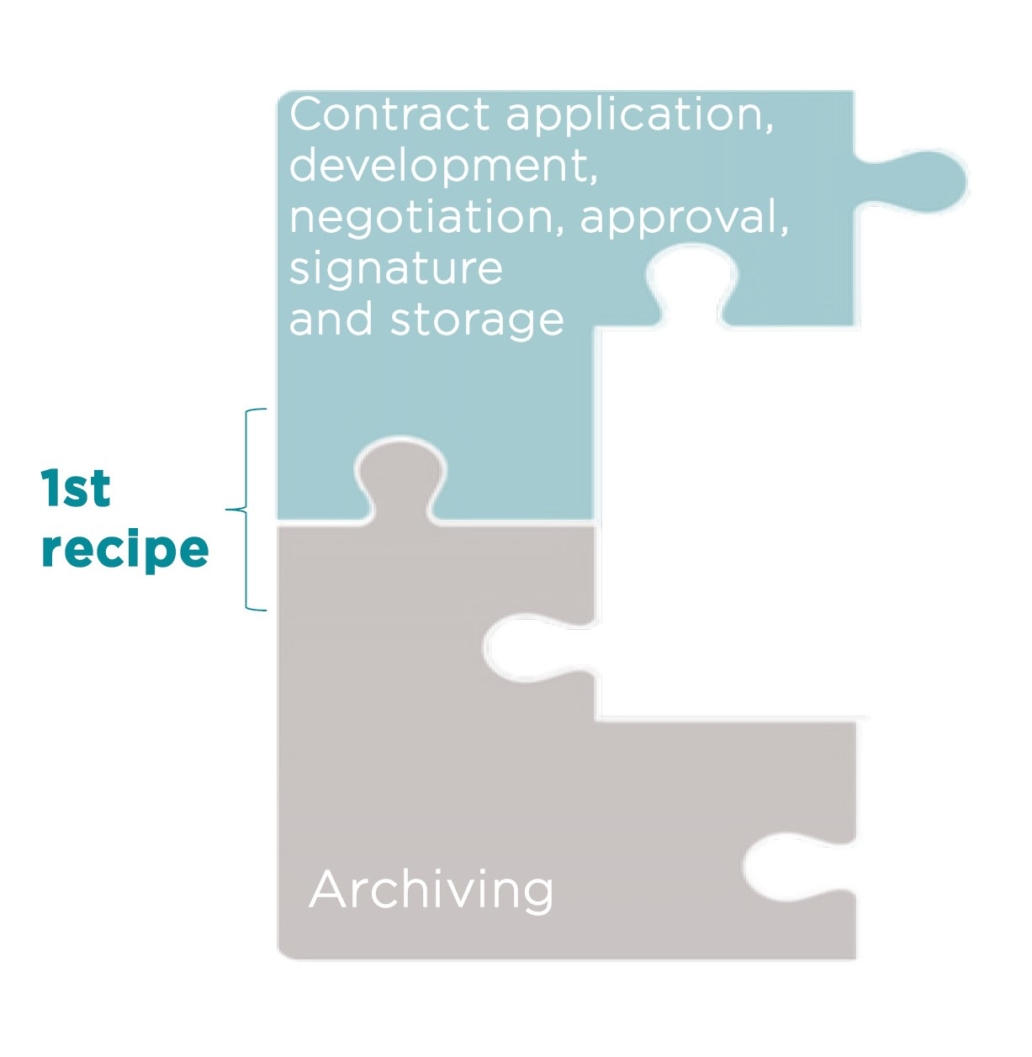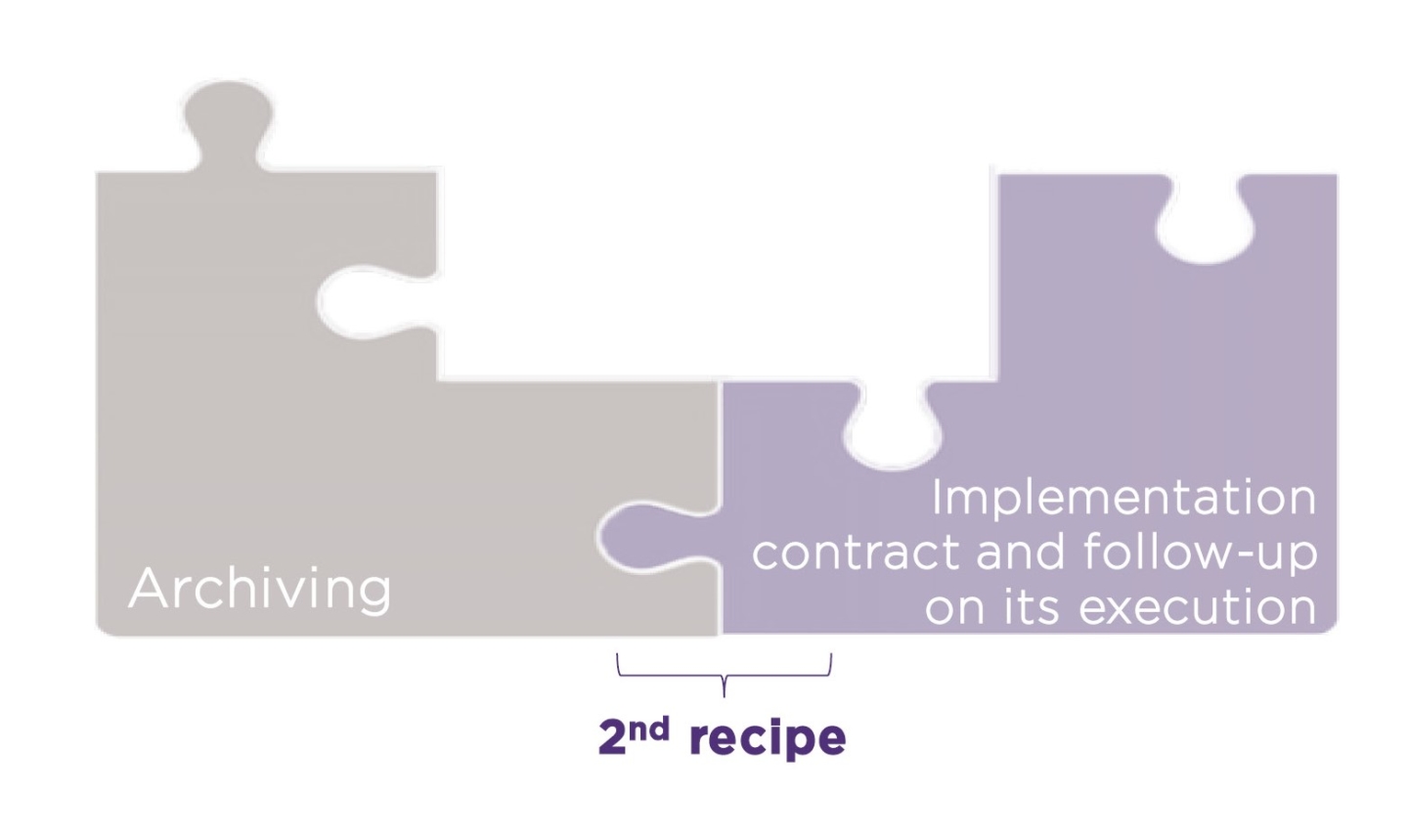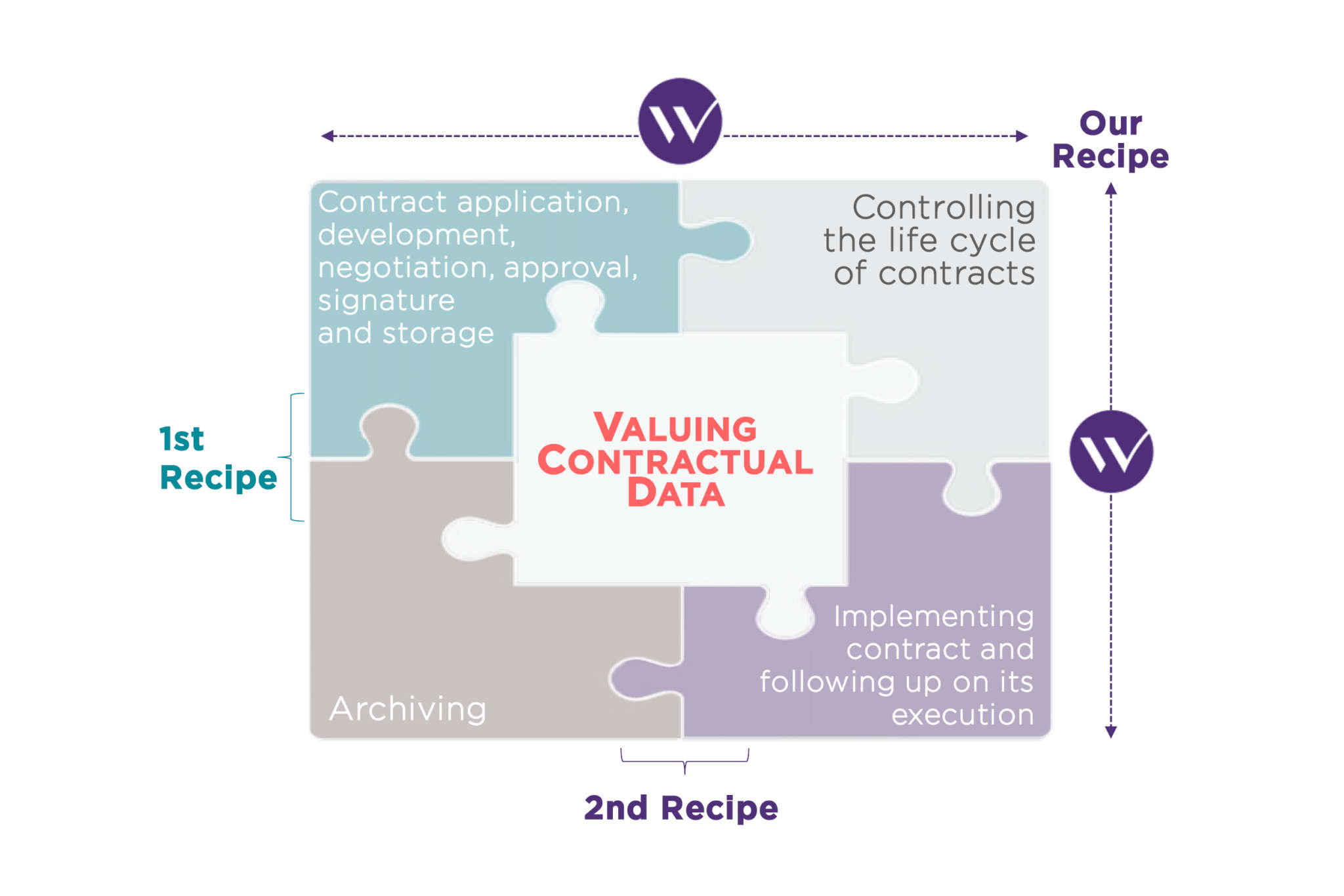Contract Management refers to activities that differ from one company to another. Like a chocolate cake, the name is always the same, but the recipes vary and the results do not all taste the same. Discover in this article our favorite recipe for successful contract management!
As the multitude of job titles (“Contract Specialist”, “Contract Manager”, etc.) show, Contract Management is an increasingly popular dish. And for good reason! Contract management is becoming more complex: companies are multiplying their relationships with different kinds of third parties (customers, suppliers, partners, subcontractors, etc.), diversifying their activities as well as their countries of practice and complying with an increasingly strict and complex regulatory framework. While the objective of Contract Management remains the same, the ingredients vary from one company to another and lead to disparate results. Although the context (corporate culture, tools in place, budgetary and/or time constraints, etc.) justifies the diversity of approaches, we want to share our favorite recipe for effective contract management, allowing companies to draw all the added value from their contracts and control the associated risks.
What are the different recipes for Contract Management?
In France, the term can certainly be used to refer to different realities from one company to another, and often even from one person to another.
Contract Management is sometimes likened to the contractualization process (from contract request to storage through drafting, approval and signature). Once stored, contracts are considered frozen and generally are only consulted in the event of a dispute. However, as illustrated by the success of the agile methodology, needs are constantly evolving, making it difficult to deliver a service as originally envisioned in a contract.
In most cases, companies use this term to refer to all the activities put in place to ensure the proper application of contracts, from their signature to closing (or renewal). This definition limits Contract Management solely to the activities of the Contract Manager. Dedicated to one or more projects, the Contract Manager is the individual who ensures the effective execution of a contract. The activities associated with this role include coordinating several parties to ensure compliance with contractual commitments, identifying associated opportunities and risks, managing disputes, implementing progress procedures, etc.
Few companies promote a comprehensive vision of Contract Management, from contract request to storage (or renewal). However, we know that only this broader vision, translated into end-to-end processes and integrated tools, can enable companies to take full advantage of the benefits of Contract Management.
Why is every ingredient essential to the success of this recipe?
Contract Management’s challenges are presented at every stage of the process (e.g. performance, productivity, compliance, contractual coverage, risk control, etc.). For example, process productivity involves both the provision of standardized contract models tailored to the needs of individuals as well as automatic data entry from different information systems (e.g. ERP, SI Purchasing, CRM, etc.), simple and automated validation workflows, the use of electronic signatures, easy access to current contracts, automatic alerts on future deadlines, etc. Similarly, the challenges of economic performance are addressed throughout the life cycle of the contract, from the challenge of the need to the control of extra costs, through negotiation.
The first pitfall, therefore, is to give unequal importance, in terms of resources and investment, to the upstream and downstream of the process.
Moreover, the two processes are inseparable. Writing a contract means anticipating its application by identifying the specific risks of the contract and the mechanisms to protect against them. As recent events have shown, the choice of whether to incorporate a force majeure clause can have a big impact on the execution of the contract. Similarly, following the execution of a contract without knowing the context and history of its development (e.g. negotiations conducted, risks identified, relationship with the partner, etc.) is a valid challenge. This lack of visibility will remove motivation to make quick and rational decisions. During a contract renewal, the renegotiation will be more effective if it is informed by the overall vision of the life of the contract (e.g. agreements and compromises found, disputes, performance, compliance with commitments, etc.).
The finest gourmets will extend the Contract Management scope to include the Market solutions explore the opportunities offered by advanced technologies such as Artificial Intelligence and Machine Learning. These new technologies are promising, and already have several areas of application: automatic tagging of contract terms, identification of risky terms, missing clauses, contracts impacted by a new law, proposal of appropriate clauses from a contract request, etc. Maturity on this subject is still low at most companies and even the most mature amongst them are still, for the most part, only testing prototypes. However, companies that have already taken this first step will stay one step ahead of the ecosystem of players they interact with.
Does expanding your list of ingredients help you increase the flavors tenfold?
Consideration of the entire lifecycle of the contract is not the only measure of effectiveness of Contract Management. Its profits are increased tenfold when all contracts (e.g. commercial, subcontracting, work, etc.) are administered under common governance. Of course, it would be counterproductive to put in place exactly the same processes. On the other hand, the development of common principles and the introduction of a single contract database can generate many opportunities for a company by allowing it to capitalize on transversality. Having all the contracts related to a project (e.g. commercial contract, subcontracting, insurance, etc.) allows companies to identify opportunities (e.g. adequacy of training contracts to employment contracts), potential synergies or to rule out certain risks. The evolution or breach of a contract can have a significant impact on other contracts. This centralized database allows you to be responsive in decision-making and make the necessary adjustments. This centralization also ensures that all stakeholders (e.g. Legal, Finance, Risks, Purchasing, Prescribers, Contract Manager, etc.) have the latest information available at a time when business relationships can be formed and undone quickly. In short, it allows access to a quality database that is complete, unique and up-to-date.
This approach to contract management at the company level rather than at the level of the various functions (e.g. HR, Purchasing, Sales, etc.) is corroborated by the need to link the different contracts but also identify the presence of common issues in contracts. Whether you’re in HR, sales, purchasing, etc., process productivity and generated performance have a direct impact on a company’s P&L, and several precautions need to be taken to meet compliance requirements. Regardless of the service in question, everyone can tell you about the time a talent has withdrawn, a sale has been missed or negotiated prices have become obsolete due to excessive contractual deadlines.
Therefore, Contract Management covering the entire contractual activity of a company, one which is enhanced by the utilization of the contractual data, will fully satisfy your taste buds! Translated into simple and robust processes and supported by integrated tools, Contract Management will allow a company to maximize the added value of contracts and control the risks, thus going beyond simply monitoring deadlines and making savings.
The market tools confirm this new momentum given to Contract Management. Most players cover the entire end-to-end process or invest in the missing elements. The same is true for the types of contracts covered: publishers initially dedicated to one type of contract extend their offers to cover all the company’s contracts.





